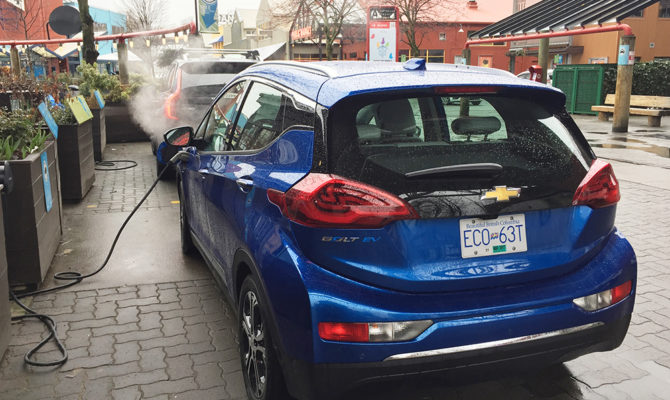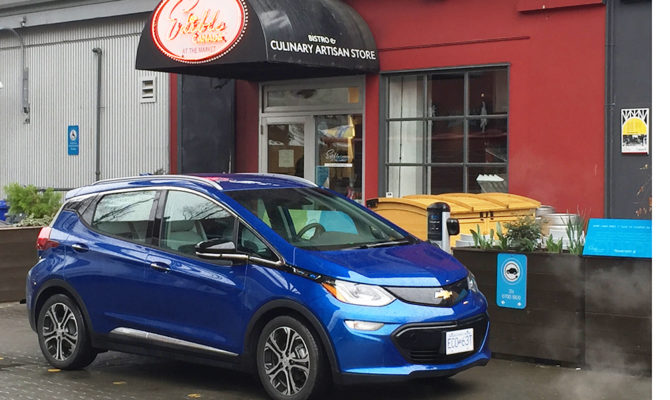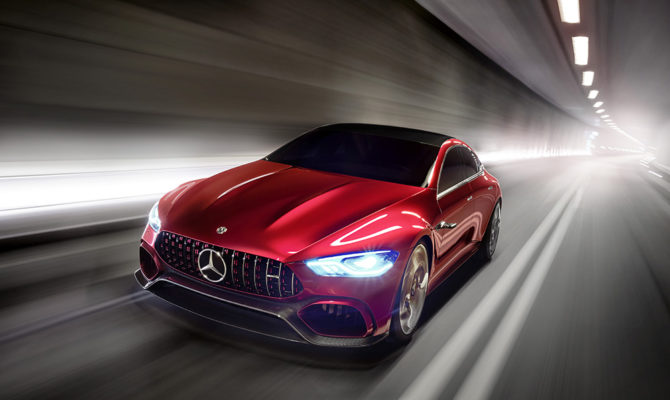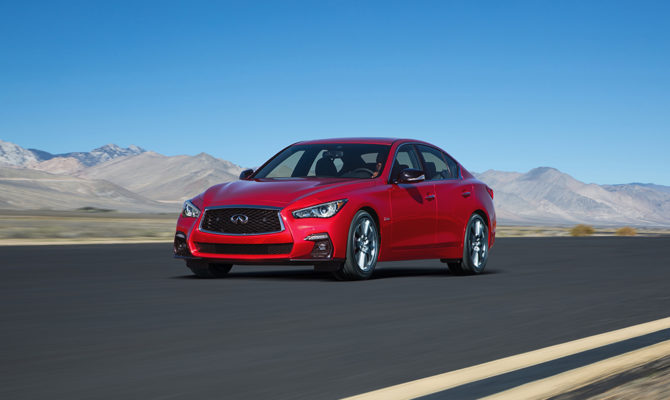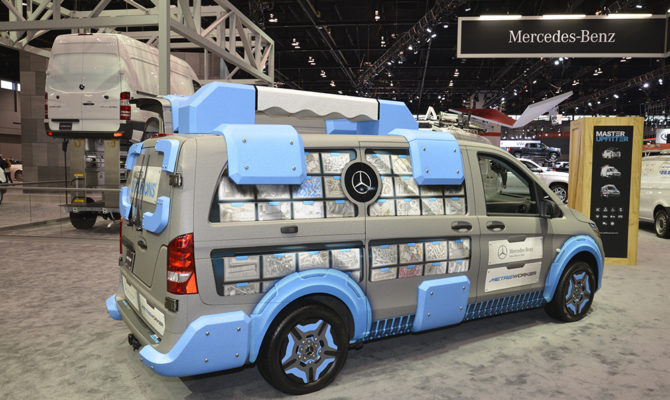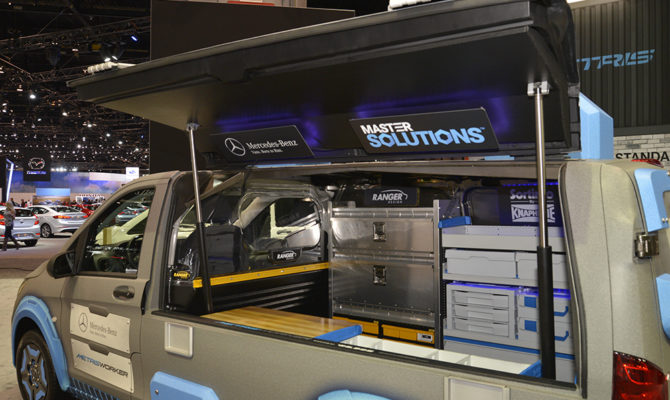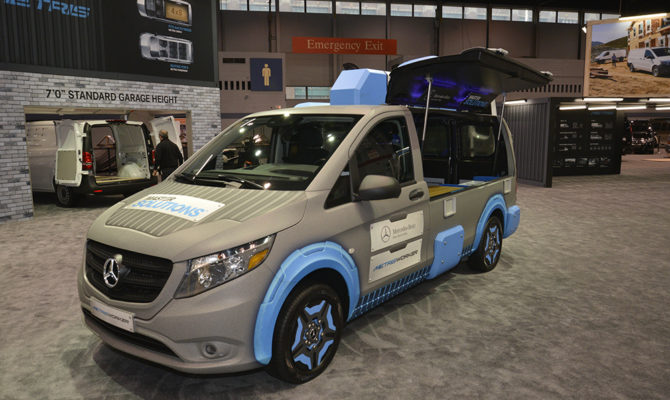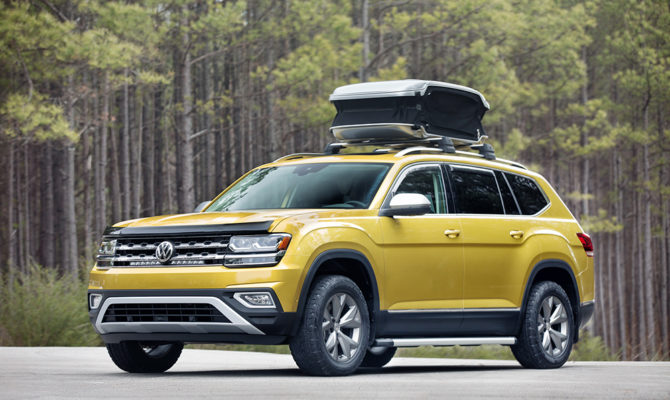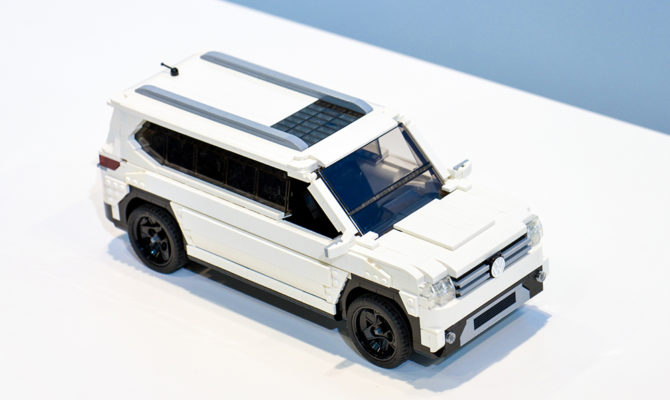At the first sign of rain you simply raise the roof at the flick of a switch and in 13 seconds you are under cover.
“In the quest for near perfection they carried out 698 tweaks to produce the second generation CX-5.”
During a short drive in the all-new Chevrolet Bolt electric vehicle, I began to wonder if its creators had discovered the secret to perpetual motion.
When I pulled off the lot, the screen readout indicated the maximum range that day, before a plug-in recharge was needed, would be a maximum of 244 kilometres. A full battery might have pushed the upper limit to 383 kilometres but what the range promised would be more than enough for my jaunt.
If I were heavy footed then I might be lucky to reach 169 kilometres; that would be embarrassing. The number 207 shone brightly through the spokes of the steering wheel. It was the more realistic range based on normal driving style and conditions.
And it offered an irresistible challenge to this competitive son of a gun! – Within a couple of minutes, it fell to 205; mind you the car had motored three clicks. When you lift your foot off the accelerator the car slows smoothly and regenerates electricity to top up the battery. Get the timing right and no more than a touch on the brake is necessary until you close in on the car ahead at the light. One pedal driving – almost!
This was going to be fun. By the time I’d clocked 10 kilometres, the readout had jumped to 209 – more range than when I set out. Cool. Maybe that 244 mark was not so optimistic. Stop and go traffic across town brought me down to earth, so to speak. My 25-kilometre drive came to an end at the recharging station opposite Granville Island Market in Vancouver. Didn’t need to plug it in but f
ree juice is free juice.
No sooner was I out of the car when a guy leapt from the other side of the road, narrowly missing a meet with one of those gas guzzling gas-electric hybrid powered taxi cabs. Just kidding. About it being a gas guzzler that is.
He wanted to know whether I would recommend the crossover-like vehicle. I proudly told him the display should really show a remaining range of 182, not the 190 he saw. Told him that if he couldn’t afford the $42,895 (plus taxes) sticker price (less a $5,000 point of purchase rebate from the Clean Energy Vehicles program) he could enter to win one at the Vancouver International Auto Show (March 28-April 2). Check it out on vancouverinternationalautoshow.com/bolt.
For the record, the gas economy equivalency is 1.8/2.1 L.100km (city/hwy). Green credentials intact, yours truly shopped and returned to drop a bag or two in the surprisingly generous space that lies beneath the rear hatch. Now for a stretch on the freeway, that would surely deplete the battery.
Well, it did and at a faster rate as I sped by some surprised faces at 100 klicks. The Bolt is similar in appearance to many cute utes on the road today but it’s a wolf in sheep’s clothing. The electric power launches the small five door family car at a rate rarely seen off track. In less than seven seconds the needle is closing in on 100 km/h.
The Bolt is loaded with what every family wants in terms of safety equipment and entertainment systems. Available active safety features including Side Blind Zone Alert, Rear Cross Traffic Alert, Forward Collision Alert and Forward Pedestrian Alert.
Jaguar has unleashed its first electric vehicle – the Jaguar I-PACE – onto the streets of London for the first time.
Driving on the streets of London’s famous Olympic Park, the electric performance SUV concept previews the Jaguar brand’s first electric vehicle, the Jaguar I-PACE, which will be revealed in late 2017 and will be on sale in the second half of 2018.
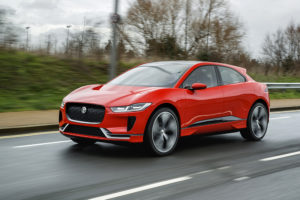
“The feedback on the I-PACE Concept has been fantastic,” said Jaguar Director of Design, Ian Callum. “With the I-PACE Concept we’ve torn up the rule book to create a vehicle with supercar inspired aesthetics, sports car performance and SUV space, in one electric package. It has surprised people and the enthusiasm for our first electric vehicle has been beyond all my expectations.
“Driving the concept on the streets is really important for the design team. It’s very special to put the car outside and in the real-world. You can see the true value of the I-PACE’s dramatic silhouette and powerful proportions when you see it on the road, against other cars.”
The Jaguar design boss says the future of motoring has arrived in the shape of the I-PACE Concept.
Powered by a 90kWh lithium-ion battery, the I-PACE will be able to accelerate from 0-100 km/h in around 4 seconds, with a targeted range of approximately 355 kms. Charging is easy and quick; an 80 percent charge can be achieved in 90 minutes and 100 percent charge achieved in just over two hours using 50kW DC fast charging.
Compact, lightweight electric motors at the front and rear axles generate a combined output of 400HP and 516-lb ft of all-wheel drive torque, putting power down and maintaining traction on a variety of surfaces and weather conditions.
The new Infiniti Q50 premium sports sedan made its global debut and Mercedes revealed an eye-catching sports car at the Geneva International Motor Show.
The Hong Kong-based company says its new Q50 features “innovative technologies that empower and support the driver, taking a holistic approach to performance.”
As the company’s core brand-building model and best-selling vehicle worldwide, Infiniti has already introduced several world-first innovations with the existing Q50.
One of the available driver assistance technologies included in the new Q50 is second-generation Direct Adaptive Steering – a steer-by-wire system that supports the driver by providing smooth operation, more direct steering responses and easy maneuverability. Direct Adaptive Steering is a precursor to future steering systems that will form a key building block to achieving fully-autonomous driving.
The Q50 is powered by the award-winning 3.0-litre V6 twin-turbo engine from the new and exclusive ‘VR’ powertrain family, which was recently named on the prestigious 2017 Ward’s ’10 Best Engines’ list.
It also features a refreshed exterior and interior design – bringing the car in line with the brand’s ‘designed to perform’ ethos.
Over at the Mercedes display, there were gasps when, as part of the 50th anniversary of Mercedes-AMG, the covers were ripped off the stunning GT Concept show car.
This four-door coupe heralds a further extension of the AMG GT family, following the legacy of the SLS AMG and AMG GT, which were completely developed at AMG’s headquarters in Affalterbach. The designation and fundamental design elements on the front and rear end denote the family affiliation to the AMG GT. The “EQ Power+” badging on the mirror camera indicates the increased performance that can be expected from hybridization at AMG.
The AMG GT Concept uses a combination of an ultra-modern V8 gasoline engine and a high-performance electric motor, both intelligently networked with an extremely powerful yet lightweight battery concept. This performance hybrid powertrain offers an impressive electric range and the opportunity to generate a system output of up to 805 horsepower in its last level of development, and covers the sprint from 0-100 km/h in less than three seconds.
“You could be forgiven for thinking that Crossover Utility Vehicles, or cute utes as they are affectionately known, are a 21st century invention but they’re not.”
Pull up to any jobsite with the “Mercedes-Benz Metris MasterSolutions Toolbox Van” and get the job done.
That’s the boast of the Mercedes folks, who launched a concept version at the recent Chicago Auto Show.
Open up the side of the Metris van and the ultimate toolbox on wheels is revealed. It’s equipped with a wide variety of Ranger Design® and Sortimo by Knapheide® shelves, racks and removable cases. The Toobox van has enough storage, utility and capability to power through long hours on the job. A durable tile flooring system has been installed, which ensures grip for work boots and is easily removable for thorough cleaning.
A clear, plastic partition from Ranger Design® keeps the driver safely divided from the cargo area while also allowing for easy monitoring of the van’s payload. Unique wheels, finished in bright blue and silver, realistic toolbox latches and a handle on the roof compliment the special exterior wrap created for the Toolbox Van.
Built by RENNtech, it is based on the Metris WORKER Cargo Van and can carry a payload of more than 1,130 kgs and has a towing capacity of twice that amount.
The standard 2.0- litre turbocharged four-cylinder engine, boasting 208 horsepower and 258 lb-ft of torque, allowing the Metris to accelerate to 100 km/h in about nine seconds. Power is sent to the Metris’ rear wheels for maximum towing capability and cargo hauling.
Mounted to the steering wheel are shift paddles—standard fitment on all Metris Cargo and Passenger vans—which allow the driver to manually change gears, whether in anticipation of a steep hill or to maximize their driving experience on a twisty road.
The Metris Cargo Van achieves 11.2/9.8L//100kms(city/hwy), thanks partly to the efficient
7G-TRONIC seven-speed automatic transmission.
“The Canadian International Auto Show media preview featured 41 “New to Canada” vehicle premieres and for the first time ever a “World Premiere”, which was video cast globally, of the 2018 Hyundai Accent.”
“The Hyundai folks gritted their teeth as the snowflakes swirled but they were smiling by the time the event wound down.”
The all-new 2018 Volkswagen Atlas that will hit dealerships this Spring was designed to let people live a life as big as their imaginations, says the manufacturer.
At the 2017 Chicago Auto Show, Volkswagen demonstrated how it can be enhanced with smart accessories in a new concept, the Atlas Weekend Edition.
Volkswagen hopes enthusiasts may appreciate the throwback to the ‘Weekender’ packages offered on the classic Vanagon and Eurovan pop-up camper models. The Atlas Weekend Edition integrates several available accessories that enhance the Chattanooga-built SUV’s versatility with innovative cargo solutions.
The concept is based on an SEL Premium model, equipped with a 3.6-litre VR6 engine making 276 hp and an eight-speed transmission, paired with Volkswagen’s advanced 4Motion all-wheel drive with Drive Mode Select.
Riding on 18-inch Prisma wheels finished in a custom anthracite gray, the special edition features a modern variation of the pop-up roof—the Urban Loader cargo box. When empty, the Urban Loader offers a sleek, minimized appearance; when needed for hauling, it can expand to a 17.7 cubic-foot container. In addition, the Weekend Edition features base carrier bars for attaching accessories for skis, snowboards, kayaks or bikes. Reaching the extra roof storage or helping small children into the vehicle is easy with practical side steps.
Inside, a robust cargo divider provides a safe, pet-friendly barrier behind the second row, so that pets can ride in comfort. The second row also features an innovative universal tablet mount that allows passengers to bring any popular variety of touchscreen tablet along for a getaway. The design provides easy access to the home button on the most common models, and the tablets can use the available Media Control feature using Wi-Fi technology for Android and iOS tablets and smartphones.
Other Volkswagen accessories built into the concept include window and hood deflectors, a heavy-duty trunk liner with seat-back coverage, a privacy cargo cover, all-weather rubber mats, splashguards, and wheel locks. Many of these accessories will be available from Volkswagen dealers when the Atlas goes on sale in Spring 2017.
Recent Comments
- { Enjoyed your Forest of Bowland in the BMW X5M, particularly the photo of the BMW in front of the main part of Stonyhurst College where... }
- { Bantam designed the Jeep, not Willy's or Ford. The American military gave the original Bantam prototype to Willys and Ford to copy. There is plenty... }
- { All Escalades come with a 6.2-lilter V8 engine that produces 420 horsepower. A six-speed automatic is the only transmission offered and drives the rear wheels.... }
- { Alexandra is an excellent journalist. }
Popular Posts
- Journey to a ‘Sparkling’ Luxury Okanagan Resort “Four lucky readers will put a Dodge Journey’s weekend-...
- The Need For Speed: Hike Those Highway Limits More than half of those polled believe the province sho...
- Drives-U-Crazy… Erratic drivers. An early morning drive from Kelowna to Vancouver is nor...
- Readers Respond: The Pros and Cons of Increasing B.C. Speed Limits Increasing the speed limits will only increase risk to...
- Honda CR-V Review: The Compact Crossover To Get Things Done The CRV is a very stylish and aerodynamic crossover veh...


